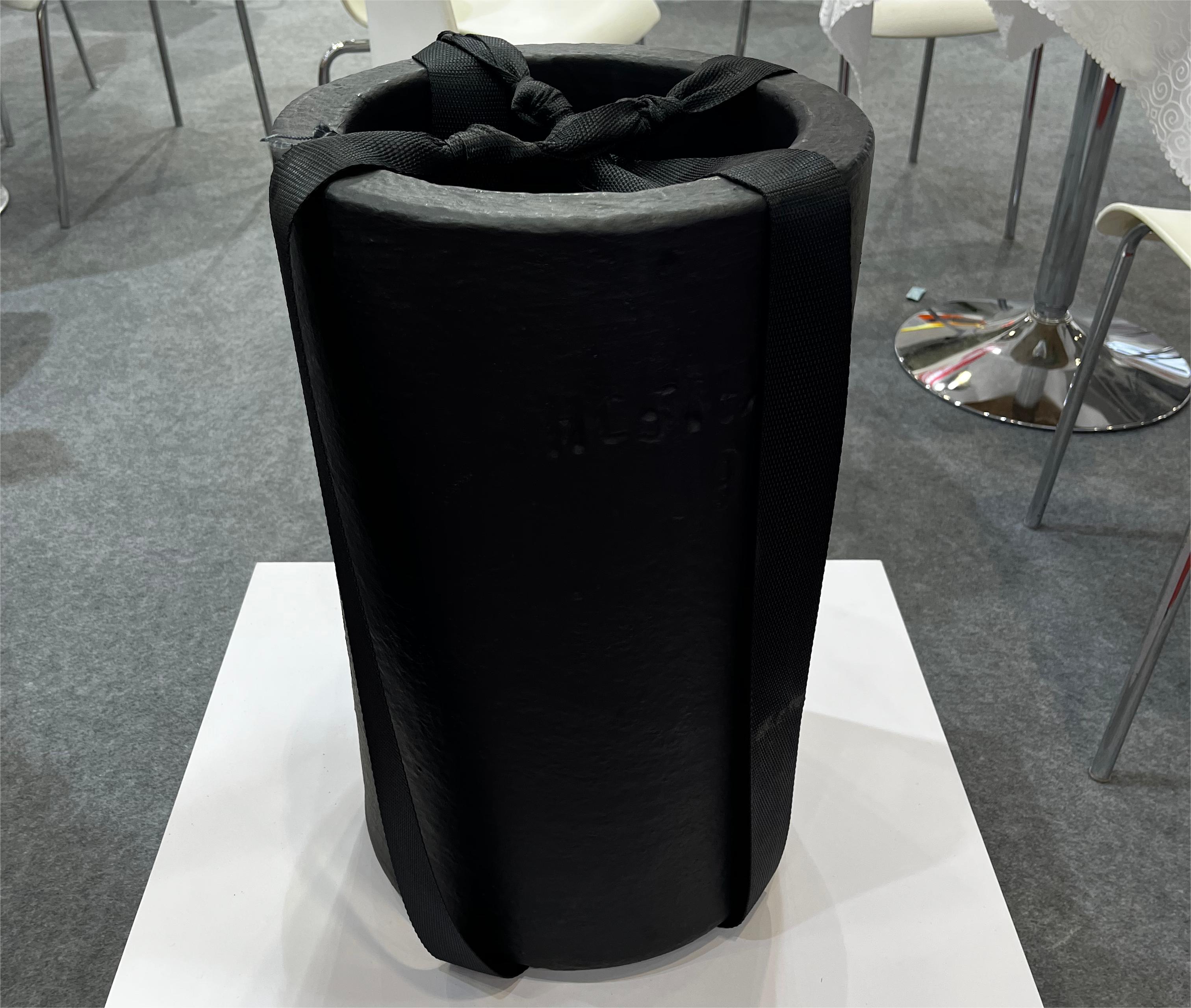
Graphite silicon carbide crucibles are essential tools in the metal casting and melting industries and are known for their durability and high temperature resistance. However, the service life of these crucibles is affected by a variety of factors that are critical to maximizing their longevity and efficiency.
Operating temperature plays an important role in determining the service life of graphite silicon carbide crucibles. The higher the operating temperature, the shorter the service life of the crucible. This is due to the increased thermal stress the crucible experiences at higher temperatures, making it more susceptible to cracking and wear. Therefore, operating temperatures must be carefully monitored and controlled to ensure extended crucible service life.
The number of uses will also affect the service life of the graphite silicon carbide crucible. After each use, crucibles experience wear and corrosion, causing their service life to gradually decrease. Therefore, the more a crucible is used, the shorter its service life will be. Regular inspection and maintenance are critical to identifying signs of wear and corrosion and determining the appropriate time for replacement.
In addition, the chemical environment in which the crucible is used also significantly affects its service life. Graphite silicon carbide crucibles exhibit varying degrees of corrosion resistance in different chemical environments. When used in highly corrosive environments, the service life of the crucible is inevitably shortened. Therefore, it is important to evaluate the chemical environment and select a crucible with appropriate corrosion resistance to ensure optimal performance and longevity.
Proper use of graphite silicon carbide crucibles is crucial to extending their service life. Improper use, such as subjecting the crucible to sudden temperature changes or dropping cold objects into it, can seriously affect its durability. Following recommended usage guidelines and handling procedures is critical to maximizing the life of your crucible and preventing premature wear and damage.
Adhesion and the presence of oxide layers in the crucible can also affect its performance and service life. Regular cleaning and maintenance to remove any adhering or oxidized layers is essential to ensure the longevity and efficiency of your crucible.
When evaluating the service life of graphite silicon carbide crucibles, it is important to consider the specific operating conditions and usage environment. Service life may vary based on factors such as temperature, chemical exposure, and application methods. Testing and evaluation must be performed regularly to determine the actual service life of the crucible and to identify any signs of wear or deterioration.
In summary, maximizing the service life of graphite silicon carbide crucibles requires careful consideration of a variety of factors, including operating temperature, frequency of use, chemical environment, proper use and periodic evaluation. By adhering to recommended usage practices and performing routine maintenance, you can extend the life of these crucibles, ensuring efficient and reliable performance in metal casting and melting applications.
The service life of graphite silicon carbide crucibles has always been a topic of concern in the materials industry as these crucibles play a vital role in a variety of high temperature applications such as metal casting, glass production and laboratory research. A recent study by materials scientists reveals the factors that influence the service life of these crucibles and provides valuable insights into improving their durability and performance.
Graphite silicon carbide crucibles are known for their excellent thermal conductivity, high thermal shock resistance and strong chemical inertness, making them ideal for withstanding extreme temperatures and harsh chemical environments. However, despite these favorable characteristics, the service life of these crucibles can be affected by a variety of factors, including operating conditions, material quality, and manufacturing processes.
Studies have shown that the service life of graphite silicon carbide crucibles is greatly affected by operating temperature and thermal cycles. Prolonged exposure to high temperatures and rapid temperature changes can cause thermal stress and mechanical degradation, ultimately shortening the crucible’s service life. Additionally, the quality of the crucible material and the manufacturing technology used can significantly affect its performance and longevity.
To address these challenges, researchers have proposed several strategies to improve the service life of graphite silicon carbide crucibles. One approach involves optimizing the composition and microstructure of the crucible material to improve its mechanical strength and thermal shock resistance. In addition, advances in manufacturing technologies such as precision molding and sintering processes can help produce denser and less porous crucibles, thereby improving their durability and chemical resistance.
Additionally, this study highlights the importance of proper handling and maintenance practices to extend the service life of graphite silicon carbide crucibles. Implementing controlled heating and cooling cycles, avoiding sudden temperature swings, and regularly inspecting for signs of wear and damage are important measures to maximize the service life of your crucible.
The results of this study have significant implications for industries that rely on high-temperature processes, as increased service life of graphite silicon carbide crucibles can lead to cost savings, increased productivity and reduced downtime. By understanding the factors that affect crucible performance and implementing recommended strategies, manufacturers and researchers can ensure reliable and long-lasting operation of these critical components in a variety of applications.
Post time: Apr-01-2024
